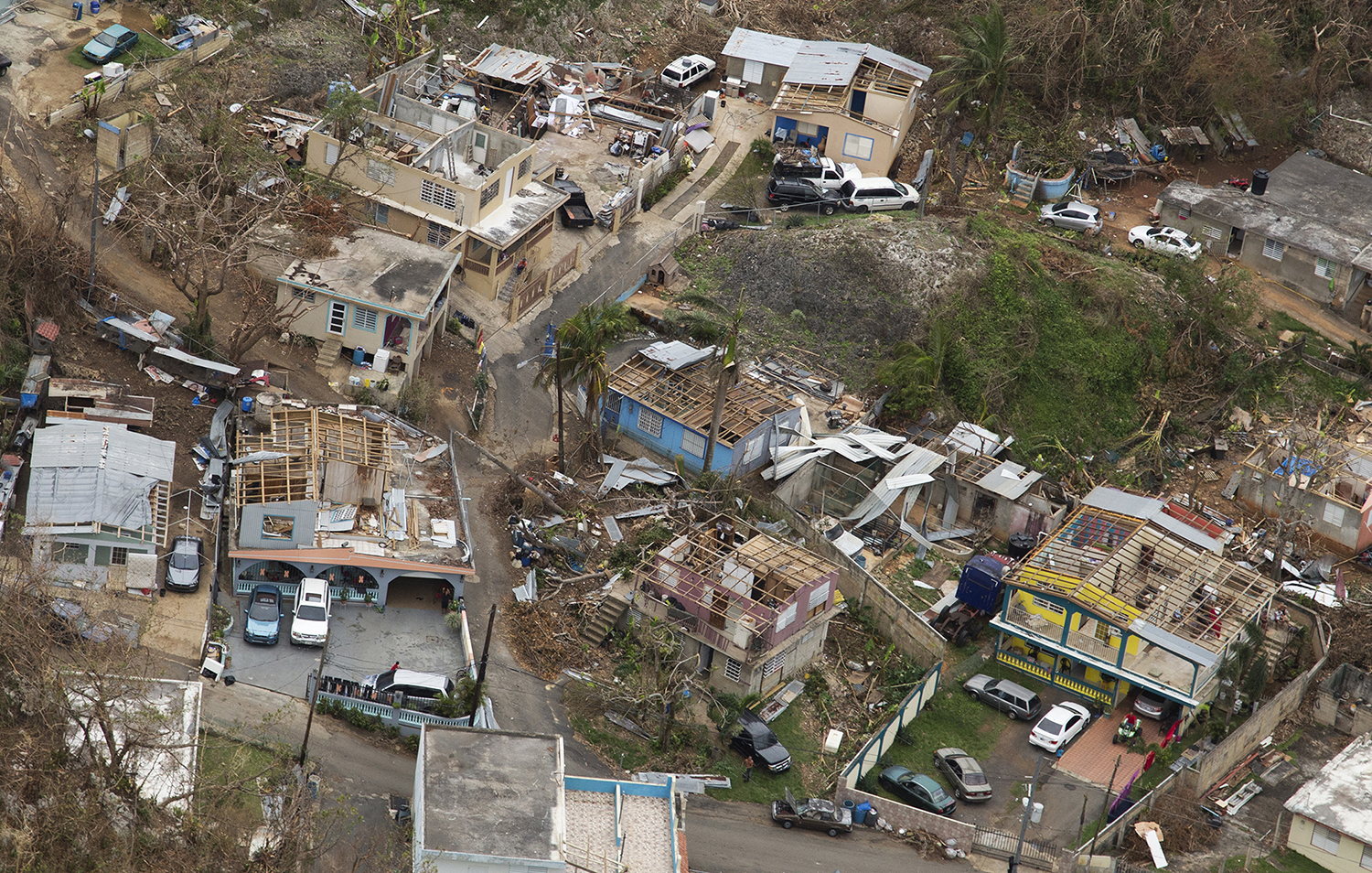Costs of
natural disasters are increasing at the high end
Penn State
 |
| Puerto Rico destruction from Hurricane Maria (US Department of Commerce photo) |
The costs of major disasters like hurricanes Katrina, Maria and Dorian or the massive tornado swarms in the Midwest have increased to a disproportionately larger extent than those of lesser events, and these major disasters have become far more expensive, according to an international team of researchers.
According to the researchers,
climate change is linked to an increase in the frequency and intensity of
natural disasters, which leads to the necessity of planning for and evaluating
the risk of these disasters.
Two years after Hurricane Maria, Puerto Rico is still recovering, and weeks after Dorian decimated Abaco and Grand Bahama, the recovery process of what looks like an enormous blast zone is still unclear. The impacts on New Orleans of Hurricane Katrina in 2005 are still visible in that city today.
Two years after Hurricane Maria, Puerto Rico is still recovering, and weeks after Dorian decimated Abaco and Grand Bahama, the recovery process of what looks like an enormous blast zone is still unclear. The impacts on New Orleans of Hurricane Katrina in 2005 are still visible in that city today.
"We have a whole distribution
of damages that we usually average to determine economic impacts," said
Francesca Chiaromonte, holder of the Dorothy Foehr Huck and J. Lloyd Huck Chair
in Statistics for the Life Sciences and professor of statistics at Penn State.
"But it is the extreme events that cause the damages that are most
difficult to deal with."
 |
| Trying to escape from the Paradise, CA wildfire |
"Large events can overwhelm local infrastructures," said Klaus Keller, professor of geosciences and director of the Center for Climate Risk Management at Penn State.
"Many decision-makers are designing strategies to manage climate risk. The success of these strategies often hinges critically on how extreme events are changing."
Policies based only on average
annual or decadal costs do not account for the increasing impact of the most
dramatic events.
"Things really ramp up at the
top 5% mark," said Chiaromonte, who is also scientific coordinator of the
EMbeDS Department of Excellence at the Sant'Anna School of Advanced studies in
Pisa, Italy. "And when we get to the top 1%, damages increased
approximately 20 fold between 1970 and 2010."
The researchers chose a quantile
regression to analyze the data to move away from "average" data
findings. They also accounted for some important controls, such as changes in
population and wealth over time. Even when accounting for these changes,
single-event damages in the top 1% are estimated to increase by $26 million
every year.
Flooded, destroyed area of
Pascagoula
"While the effect of time on
averages is hard to detect, effects on extreme damages are large, statistically
significant and growing with increasing percentiles," the researchers
report today (Oct. 7) in the Proceedings of the National Academy of Sciences.
The researchers note that increases
in the costs of extreme natural disasters are not uniform around the globe.
They appear more dramatic in areas traditionally considered temperate.
"This may be due to the fact
that extreme disasters are now hitting temperate areas as well as the fact that
these areas are less prepared to deal with extreme disasters compared to
tropical regions," said Chiaromonte.
"Tropical regions, especially those in the rich part of the world, have developed mechanisms to attenuate the impacts of extreme disasters. Similar efforts may, in fact, be needed in areas that we have traditionally considered 'safer.'"
"Tropical regions, especially those in the rich part of the world, have developed mechanisms to attenuate the impacts of extreme disasters. Similar efforts may, in fact, be needed in areas that we have traditionally considered 'safer.'"
While the economic impact of extreme
natural disasters is increasing, based on the data considered in the study,
mortality is on a downward trend, perhaps because of lower vulnerabilities,
improved early warning systems and evacuation systems, and more effective
relief efforts.
However, this should not breed complacency, the researchers note. The data indicate an increase in casualties linked to extreme temperature events.
However, this should not breed complacency, the researchers note. The data indicate an increase in casualties linked to extreme temperature events.
An important implication of this
study is that the insurance industry and public disaster management
institutions should expect to face increasing economic losses, the researchers
said. Another important implication is that adaptation measures will be
critical in temperate areas as well as in the tropics.
The researchers also note that if part of the shift to larger, more expensive, natural disasters is the result of climate change, then mitigation of climate change is an obvious approach to mitigating economic impacts.
The European Union Horizon 2020
Research and Innovation program and the Penn State Center for Climate Risk
Management supported this work.